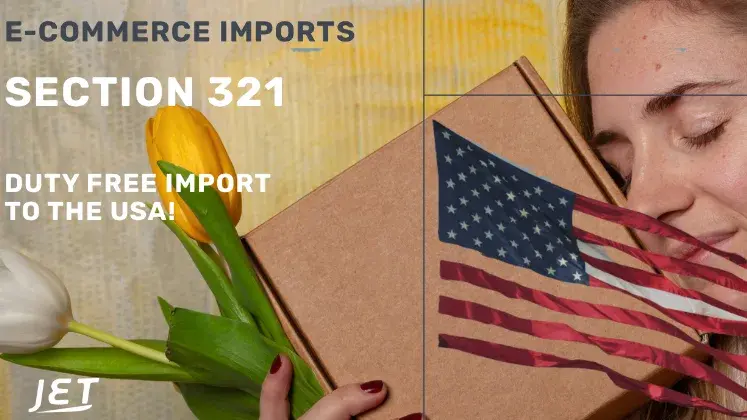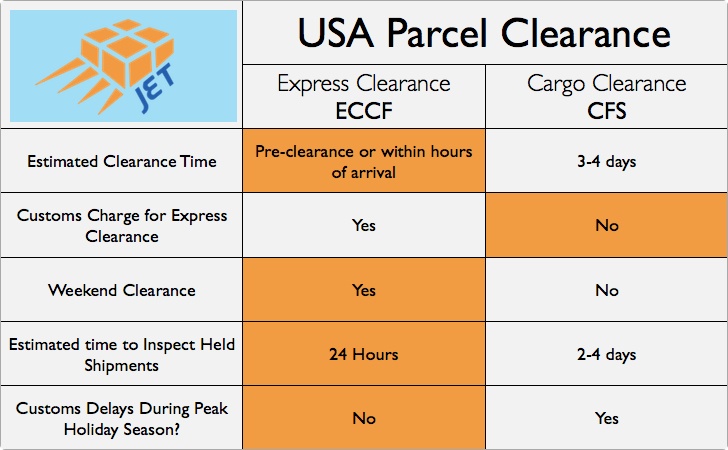
The Battle For E-Commerce Parcel Delivery to the USA
Market analysts - including reports from the Postal Regulatory Commission (PRC) * highlights the increased direct competition between USPS and the FedEx/UPS duopoly. USPS is making aggressive push to grow their market share in e-commerce parcel delivery through targeted price reductions and lower cost for commercial shippers.
The USPS transformation continues
- Increased rates for mail to offset volume decline
- Increased parcel volumes but increased competition
- The Postal Service’s evolving pricing structure for UPU global treaty mail
Disclaimer: The information in Jet Worldwide online content, including this post, is for general information only and is not intended to, constitute legal and/or tax advice. All liability with respect to actions taken or not taken based on the contents of this site are hereby expressly disclaimed. The content on this posting is provided “as is”; no representations are made that the content is error-free.
Shipping Direct with USPS from outside the USA
Shippers can take advantage of USPS low cost last mile delivery to the USA by shipping direct to the USA. Section 321 processes are available via express (ECCF) and cargo (CFS and Type 86). Contact Jet's team to start building your direct shipping flows for your online orders to the USA.

Shipping Direct with USPS to the USA via Canada
Shippers can take advantage of section 321 entry to the USA via the Canada border. Contact Jet's team for details on shipping via Canada.
Financing low cost parcel delivery with profits from postal monopoly?
Government regulators granted continued monopoly on letter delivery and have approved generous price increases to help the postal service manage the declining mail volume.
The special status granted the USPS in “market dominant” products such as letter delivery is not supposed to extend to “competitive services” such as parcel delivery. The lack of detailed financial reporting has led to accusations from FedEx/UPS of the USPS using funding from their letter monopoly to finance their parcel services.
The Notice Postal Regulatory Commission did not publish detailed revenues, attributable costs, and cost.
- The USPS made this request due to competitive concerns
- FedEx/UPS objected to detail financial reports not being made public
- Not having detailed financial revenues and costs makes it difficult to determine if the USPS is transferring profits from their letter monopoly to parcel delivery
The argument of cross subsidization has existed for many years, but becoming more urgent as the Postal service now competes more directly with FedEx/UPS.
FedEx and UPS have made the following arguments to the postal regulator, The Public Regulatory Commission (PRC):
- The USPS increased rates averaged of 5.9 percent this year for market dominant products (letters) but only 2.4 percent rate increase for competitive (parcel) products over the same period.
- UPS argues that the Postal Service is trying to “squeeze” as much revenue as the Commission will allow from market dominant mailers while “making a grab” for market share in parcel delivery
- FedEx states that the Postal Service, by proposing extreme price decreases in the weight categories most used by commercial e-commerce shippers, is making for a fiercely competitive e-commerce parcel delivery market
- UPS states that because 45 percent of the Postal Service’s total costs cannot be attributed to any individual product, this enables the Postal Service to avoid fiscal responsibility and accountability
- FedEx asserts that advantage for postal e-commerce parcel delivery goes beyond simply pricing and includes exclusive access to mailboxes and post office boxes.
- FedEx and UPS claim that e-commerce parcel delivery services take a larger share of the fixed overhead / institutional costs. (The the Post Office assigns the required minimum of 5.5 %). They recommend that the percentage of costs be automatically adjusted as the relative volumes evolve.
3 COMPETITORS + 1 : 1 MARKET
The rivalry between FedEx, UPS and the Postal Service belies the fact of their symbiotic relationship. Together, the three parcel carriers control virtually the entire US Parcel delivery market.
- USPS is a major customer of FedEx and UPS
- FedEx has drop boxes at most US post offices
- FedEx and UPS give USPS millions of parcels per day for low cost "last mile" delivery
Amazon logistics now presents the "big three" with a big "plus one." Although Amazon has disrupted the oligarchy of FedEx, UPS, USPS, the Amazon delivery network is only available via their fulfillment services.
The Postal Regulatory Commission PRC
The PRC itself under pressure from the parcel carriers. Despite pressure from private parcel carriers, the Commission determined that the latest price changes “will not result in market dominant products subsidizing competitive products”.
Statement from Commission on August 15th Order Approving Changes in Rates:
“...the Postal Service operates as a unique competitor in that it is subject to different rules and mandates than private sector competitors”

Although FedEx stated that it is time to “rethink the Commission’s role in protecting fair competition” in parcel delivery, the commission noted that “neither UPS nor FedEx suggests that the proposed changes are unlawful.”
The Postal Regulatory Commission:
- Five Commissioners
- Appointed by the President/ approved by the Senate
- Commissioners are appointed for a term of 6 years
- No more than three members of the Commission can be from one political party
Following new UPU rules, the USPS is seeking to connect directly with international shippers via their global direct entry program.
For e-commerce shippers, the competition between a duopoly and a government sanctioned monopoly provide the necessary competition to keep parcel delivery costs low.
At Jet Worldwide, we support innovative solutions from the private sector, venture capital, and regional carriers.
As e-commerce parcel delivery to the USA continues to grow, so will the competition between FedEx/ UPS and the post office.
JETWORLDWIDE.COM






